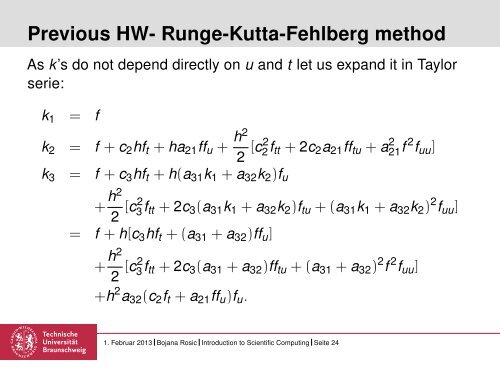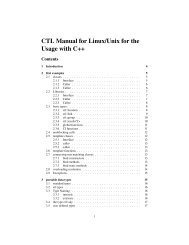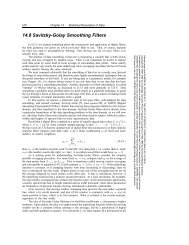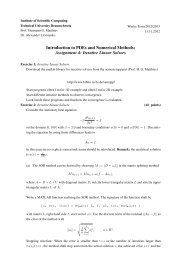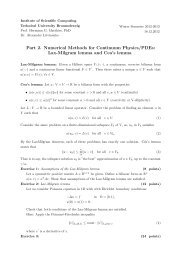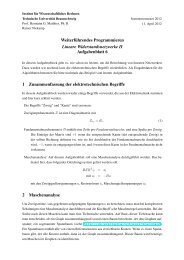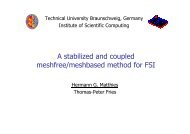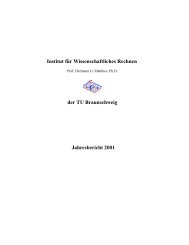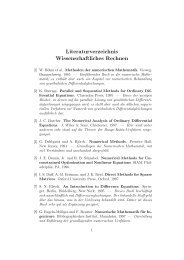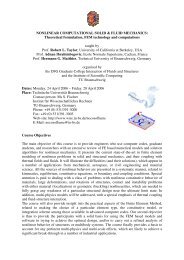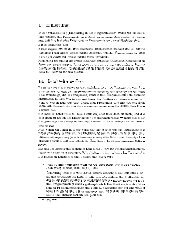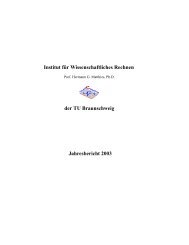Introduction to Scientific Computing - Tutorial 13: Recapitulation
Introduction to Scientific Computing - Tutorial 13: Recapitulation
Introduction to Scientific Computing - Tutorial 13: Recapitulation
Create successful ePaper yourself
Turn your PDF publications into a flip-book with our unique Google optimized e-Paper software.
Previous HW- Runge-Kutta-Fehlberg method<br />
As k’s do not depend directly on u and t let us expand it in Taylor<br />
serie:<br />
k 1 = f<br />
k 2 = f + c 2 hf t + ha 21 ff u + h2<br />
2 [c2 2 f tt + 2c 2 a 21 ff tu + a21 2 f 2 f uu ]<br />
k 3 = f + c 3 hf t + h(a 31 k 1 + a 32 k 2 )f u<br />
+ h2<br />
2 [c2 3 f tt + 2c 3 (a 31 k 1 + a 32 k 2 )f tu + (a 31 k 1 + a 32 k 2 ) 2 f uu ]<br />
= f + h[c 3 hf t + (a 31 + a 32 )ff u ]<br />
+ h2<br />
2 [c2 3 f tt + 2c 3 (a 31 + a 32 )ff tu + (a 31 + a 32 ) 2 f 2 f uu ]<br />
+h 2 a 32 (c 2 f t + a 21 ff u )f u .<br />
1. Februar 20<strong>13</strong> Bojana Rosic <strong>Introduction</strong> <strong>to</strong> <strong>Scientific</strong> <strong>Computing</strong> Seite 24


